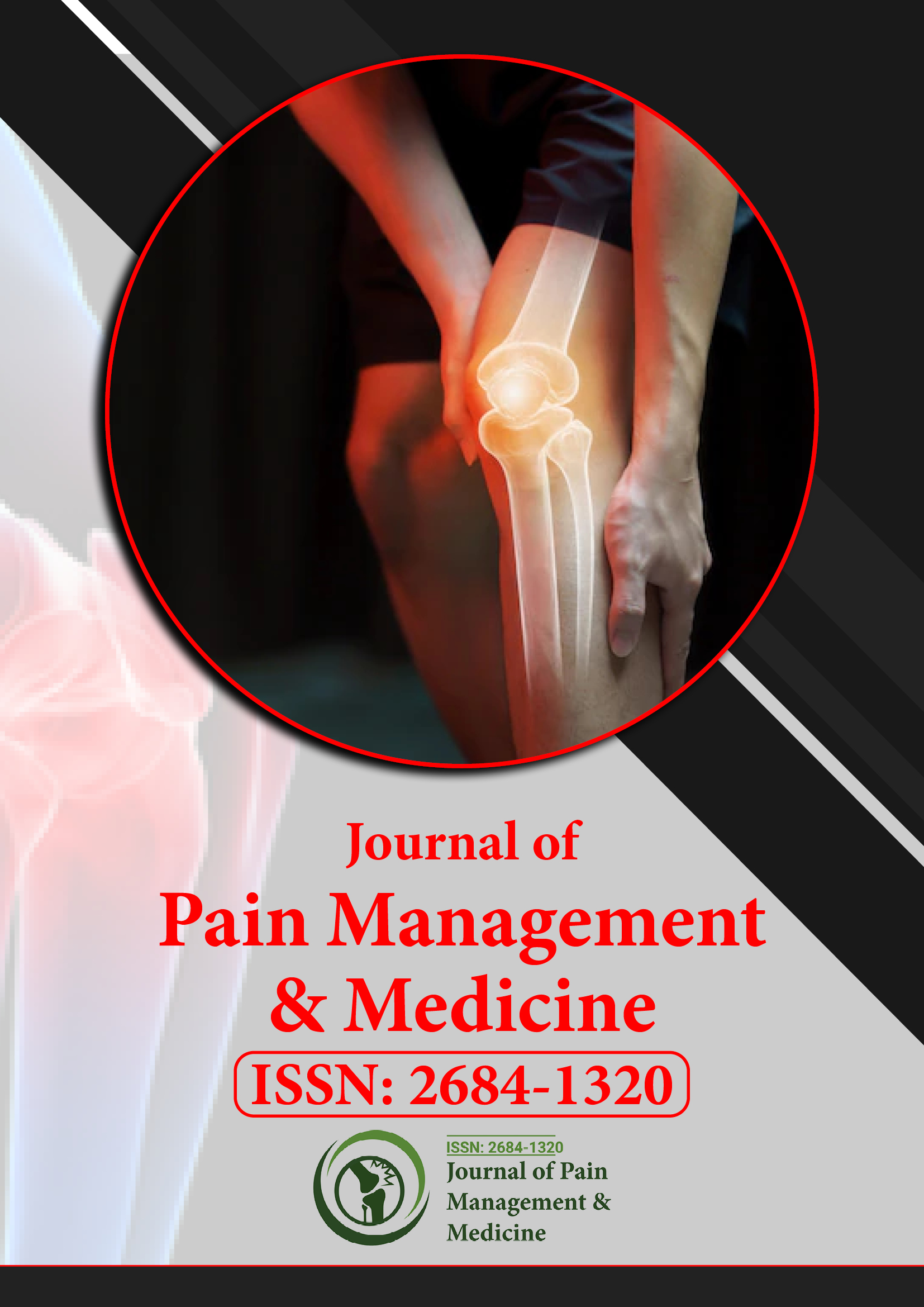ఇండెక్స్ చేయబడింది
- RefSeek
- హమ్దార్డ్ విశ్వవిద్యాలయం
- EBSCO AZ
- పబ్లోన్స్
- యూరో పబ్
- గూగుల్ స్కాలర్
- నాణ్యమైన ఓపెన్ యాక్సెస్ మార్కెట్
ఉపయోగకరమైన లింకులు
ఈ పేజీని భాగస్వామ్యం చేయండి
జర్నల్ ఫ్లైయర్

యాక్సెస్ జర్నల్స్ తెరవండి
- ఆహారం & పోషకాహారం
- ఇంజనీరింగ్
- ఇమ్యునాలజీ & మైక్రోబయాలజీ
- క్లినికల్ సైన్సెస్
- జనరల్ సైన్స్
- జెనెటిక్స్ & మాలిక్యులర్ బయాలజీ
- నర్సింగ్ & హెల్త్ కేర్
- న్యూరోసైన్స్ & సైకాలజీ
- పర్యావరణ శాస్త్రాలు
- ఫార్మాస్యూటికల్ సైన్సెస్
- బయోఇన్ఫర్మేటిక్స్ & సిస్టమ్స్ బయాలజీ
- బయోకెమిస్ట్రీ
- మెటీరియల్స్ సైన్స్
- మెడికల్ సైన్సెస్
- రసాయన శాస్త్రం
- వెటర్నరీ సైన్సెస్
- వ్యవసాయం మరియు ఆక్వాకల్చర్
- వ్యాపార నిర్వహణ
నైరూప్య
జనరలైజ్డ్ యాంగ్జయిటీ డిజార్డర్ (GAD) వెన్నునొప్పి యొక్క న్యూరోపతిక్ కాంపోనెంట్ యొక్క తీవ్రత మరియు సంభావ్యతను అంచనా వేస్తుందా? ఒక క్రాస్ సెక్షనల్ స్టడీ
అదితి ముఖోపాధ్యాయ మరియు సుభాను శేఖర్ రాయ్ చౌదరి
పరిచయం: ప్రపంచవ్యాప్తంగా ఉన్న గృహిణులలో వెన్నునొప్పి మరియు GAD చాలా సాధారణం. వివిధ పాథోఫిజియోలాజికల్ కారకాలు వెన్నునొప్పి యొక్క రోగ నిరూపణ మరియు రోగనిర్ధారణను క్షీణింపజేస్తాయి, వీటిలో న్యూరోపతిక్ భాగం గుర్తించదగినది. ప్రస్తుత అధ్యయనం GAD వెన్నునొప్పి యొక్క న్యూరోపతిక్ భాగం యొక్క అవగాహన మరియు తీవ్రతను పెంచుతుందా అని అన్వేషించింది.
పద్ధతులు: ఈ అధ్యయనంలో నలభై ఎనిమిది మంది గృహిణులు చేర్చబడ్డారు. పాల్గొనేవారికి కనీసం 5 సంవత్సరాల ఇంటి పని అనుభవం ఉంది. క్రాస్ సెక్షనల్ డేటా సబ్జెక్టివ్కు సేకరించబడింది మరియు వెన్నునొప్పిని ఆబ్జెక్టివ్ గా గుర్తించడం వరుసగా VAS స్కేల్ మరియు పెయిన్ డిటెక్ట్ టూల్ ద్వారా జరిగింది. GAD స్కోర్లు GAD 7 సాధనంతో విభిన్నంగా కనుగొనబడ్డాయి. నొప్పి నిపుణుడి సమక్షంలో స్ట్రక్చర్డ్-ఇంటర్వ్యూ సెషన్ల ద్వారా పాల్గొనేవారి క్లినికల్ మరియు మందుల చరిత్ర గుర్తించబడింది.
ఫలితాలు: పాల్గొనేవారిలో సగం మంది నరాలవ్యాధి నొప్పిని ప్రదర్శించినట్లు ఫలితాలు చూపించాయి. పాల్గొనేవారిలో నరాలవ్యాధి నొప్పి యొక్క తీవ్రత మరియు అవగాహన యొక్క అసమానతలను GAD గణనీయంగా పెంచుతుందని చూపబడింది. అనాల్జేసిక్ థెరపీతో నొప్పి నివారణకు ఎటువంటి మందులు తీసుకోలేదని మెజారిటీ సబ్జెక్టులు నివేదించాయి. రిగ్రెషన్ విశ్లేషణ ప్రతిబింబిస్తుంది, GABA-అగోనిస్ట్లు మరియు యాంజియోలైటిక్స్ జోడించడం వలన VAS స్కేల్పై నొప్పి యొక్క ముఖ్యమైన అవగాహన లేదు.
ముగింపు: GAD- ప్రభావిత స్త్రీలలో వెన్నునొప్పి (VAS స్కేల్పై) యొక్క అవగాహనను తగిన మందులు గణనీయంగా తగ్గించగలవని ఈ పరిశోధనలు సూచిస్తున్నాయి. సైకోపతిక్ కోమోర్బిడిటీతో బాధపడుతున్న రోగులలో వెన్నునొప్పిని నిర్వహించడంలో వ్యక్తిగతీకరించిన ఔషధం యొక్క అవసరాన్ని అధ్యయనం వినిపించింది.